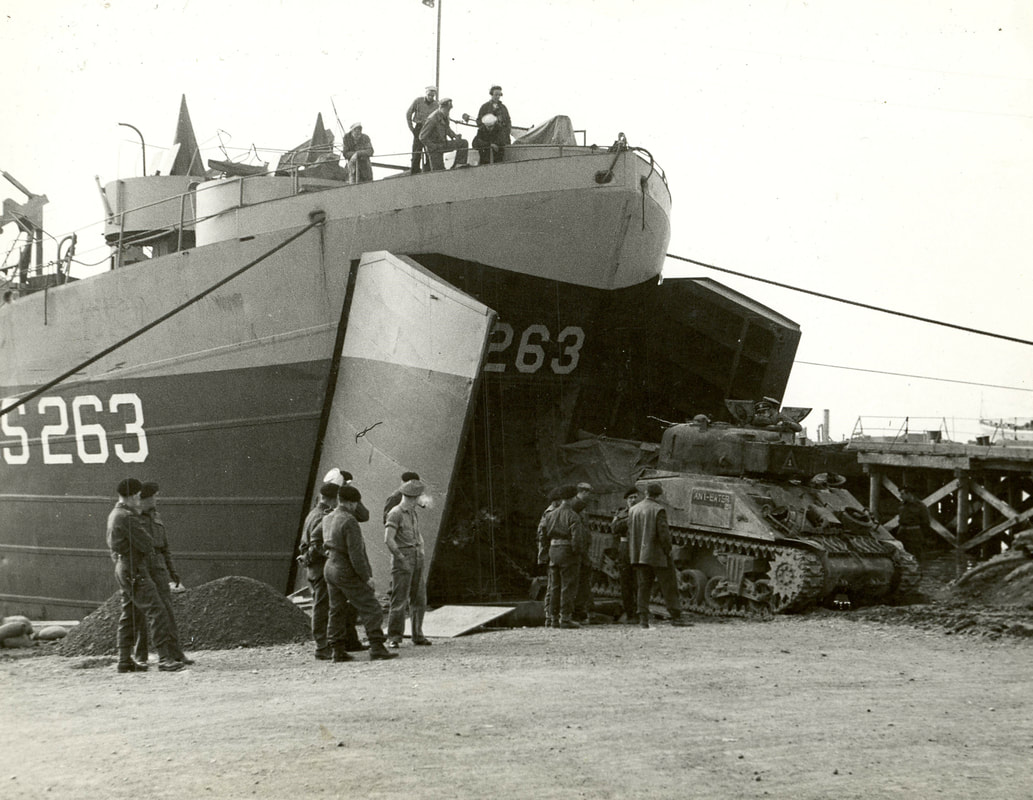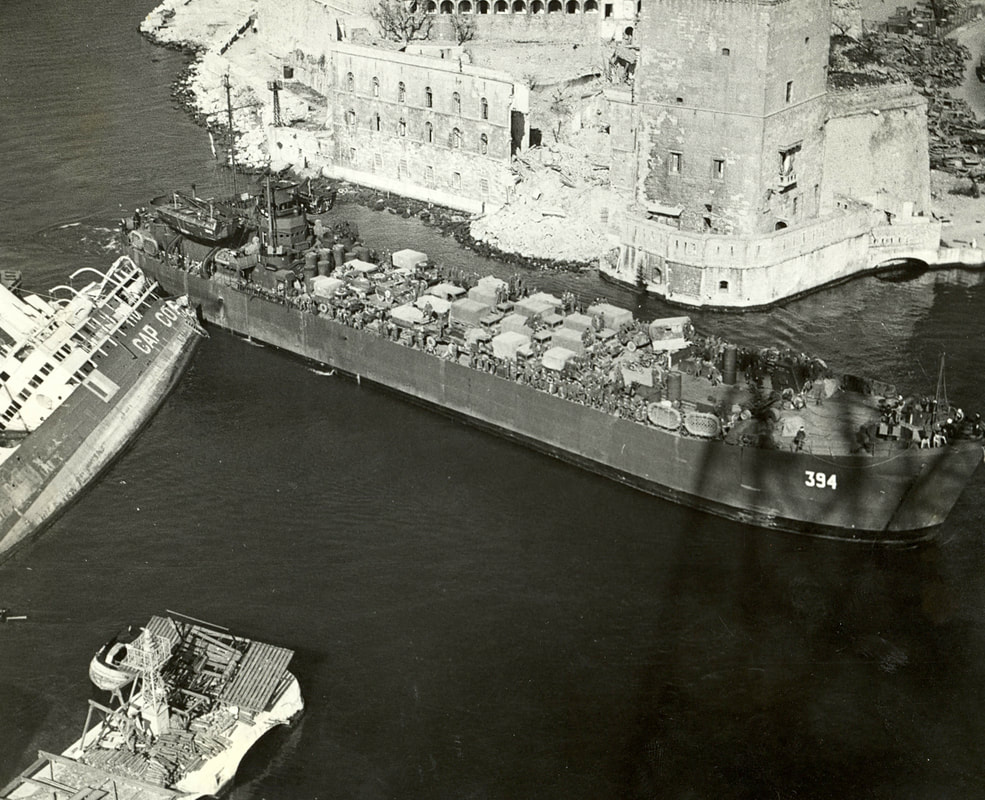The 8th New Brunswick Hussars were pulled off the frontline from the 11th to the 14th of January, 1945. A mere five Sherman tanks were left behind in fortified positions while the Regiment was placed in Corps reserve. There, the men got some well-deserved rest but instead of being mustered for a new offensive as they expected, the Hussars found themselves in the port of Leghorn embarking on ships bound for the south of France.
The entire operation required the utmost secrecy, and several precautions were taken to ensure the Germans were kept in the dark. Should the operation be discovered, the Germans would undoubtedly make efforts to intercept the troops en route to their destination and might attempt to exploit the weakened Allied presence in Italy by launching offensive operations. To maintain the charade, the Royal Canadian Corps of Signals maintained normal levels of radio chatter by sending fake messages to avoid rousing enemy suspicions. Next, a special unit was created with the task of keeping up appearances. These men were tasked with driving along predetermined routes across the front to maintain the illusion that Canadian forces remained in their positions.
Moving to France provided a significant boost to the morale of the regiment. Though the men had become acclimated to fighting in Italy, their relocation seemed to signal the war was entering its final stages. As the regimental war diary notes, “the atmosphere among the men is very cheerful, everyone anticipating their move to France and seemingly happy to leave Italy. A number of the men have been in Italy since November, 1943, and the remainder have spent approximately 15 months in this theater.”
By the 24th of January, the entire regiment had been assembled in France and was given the order to move off. The first day they moved 250 kilometers, 140 on the second, and 200 on the third. The tanks were moved up on rail cars, while many of the men drove up in wheeled vehicles. Throughout the journey to the front, the men were struck by the breathtaking beauty of the countryside through which they passed juxtaposed by the burnt-out remnants of thousands of German vehicles. Eventually, the regiment found itself stationed at a Belgian town names Roulers. Located in the Ypres area of Great War fame, the Hussars stayed there for three weeks. The Hussars found Roulers to be much cleaner and friendlier compared to Italian towns. Relations with the locals were characterized as excellent, and a lively social life emerged. During the period the Hussars were in Roulers, leaves were granted to England and France, and visits to the battlefields of Ypres and Vimy organized. It was a welcome break for a battle-hardened regiment.
Despite the happy respite, soon it was back to the business of warfighting. The 5th Canadian Division was reorganized, and armoured regiments, including the Hussars, were reinforced with one extra tank per troop, raising the regimental total from 64 to 85. More importantly, however, each troop was given two Sherman Fireflies armed with an excellent 17 pounder gun. Though a reliable and fast tank, the Sherman had long been held back by its inadequate armament. Its short-barrel low-velocity 75mm gun was designed to engage infantry and light vehicles, so it could not penetrate the thick frontal armour of heavy German tanks. The 17 pounder, on the other hand, was much longer and could impart a much greater velocity on its projectile which enabled it to penetrate the armor on even the dreaded Tiger. The Sherman Fireflies would become the regimental fire brigade, being called upon to provide anti-tank support across the line. Well-rested and newly fortified with new tanks, the Hussars were finally ready to head back into action.
The stage was now set for the endgame in Western Europe. As the Americans thrust into the German Rhineland the Canadians were given the task of moving into the Netherlands. The next phase of the Regiment’s war was about to begin.
To find out more about the 8th Hussars in North-West Europe, stop by the 8th Hussars Museum in the historic Sussex Train Station on Broad Street.

